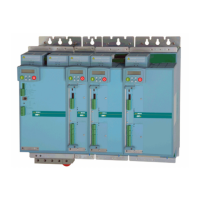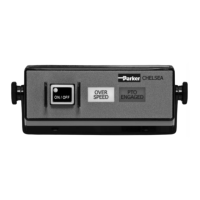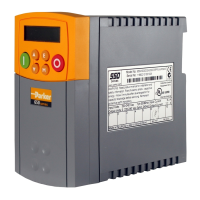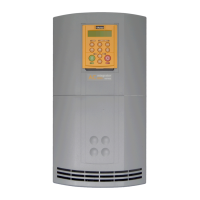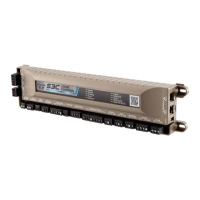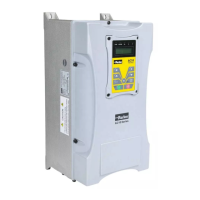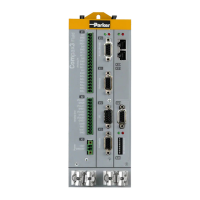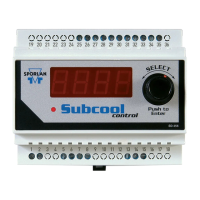Programming
Page D-16 890CS Common Bus Supply - Frames B & D; 890CD Common Bus Drive and 890SD Standalone Drive - Frames B, C & D
8
9
10
11
B
C
D
1
2
3
4
5
6
7
E
♦ The Rotating autotune sequence rotates the motor up to the user-programmed MAX SPEED
(SETPOINT SCALE function block) in order to identify these parameters.
Speed Loop Autotune (MODE = 2 or 3)
For these additional tests, the motor is connected to the load.
♦ The Stationary autotune will calculate the speed loop gains without rotating the motor. You must know
the total inertia of the system and enter it into the TOTAL INERTIA parameter in the MOTOR DATA
function block.
♦ The Rotating autotune applies a sequence of torque steps to the motor and load to determine the total
inertia of the system. This value is entered into the TOTAL INERTIA parameter in the MOTOR DATA
function block.
The maximum speed and torque that can be reached during this test is set by the SPD MAX SPEED and
SPD MAX TORQUE parameters.
The value of total inertia, together with SPD LOOP BNDWDTH, is then used to calculate values for the
SPEED PROP GAIN and SPEED INT TIME parameters in the SPEED LOOP function block. The
model used to calculate this is a simple 2nd order closed-loop system with critical damping.
The maximum value of SPEED PROP GAIN is limited to a value of 20.00 in Sensorless Vector mode. In
Closed-Loop Vector mode, it is limited such that the torque ripple due to encoder quantisations is less than
10%. If either of these limits is reached, then the SPD LOOP BNDWDTH parameter is re-calculated. After
the test, this parameter will display the bandwidth achieved.
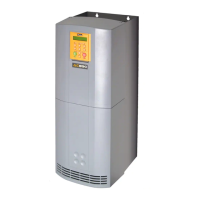
